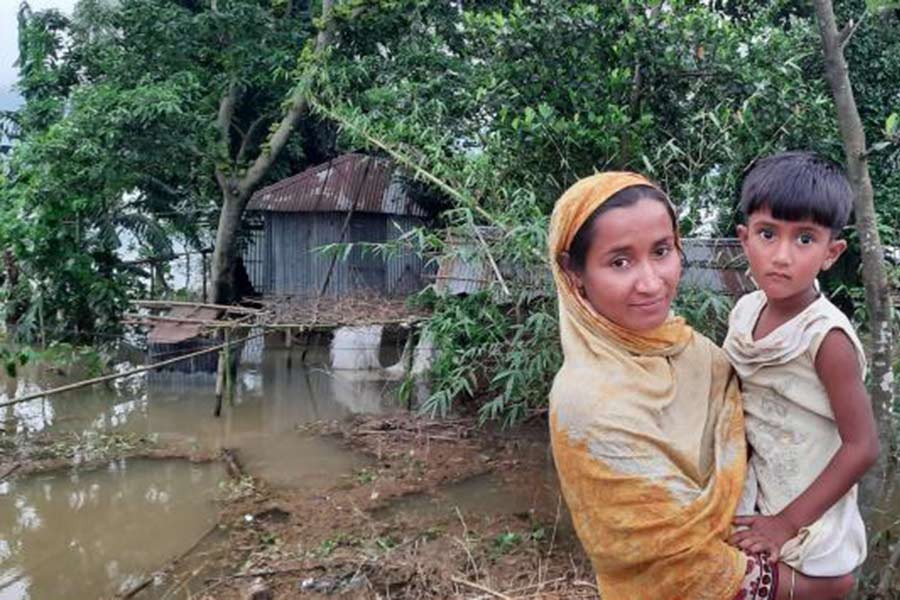Over 1.5 million children are at increased risk of waterborne diseases, drowning and malnutrition due to extensive flooding in north-eastern Bangladesh, according to UNICEF.
The UN agency says it is on the ground with Government and non-government partners to respond to the urgent safety, health, nutrition, clean water and education needs of children and their families.
In a statement on Monday, UNICEF said extensive flooding affected over four million people in five districts of north-eastern Bangladesh. These districts are Sylhet, Sunamganj, Habiganj, Netrokona and Maulvibazar.
Out of the five districts, Sylhet and Sunamganj were most affected, with water flowing above dangerous levels. Agricultural land and critical infrastructure, including power stations and schools, have been submerged, according to the statement.
“Cases of diarrhoea, respiratory infection, and skin diseases have already been reported. At least three children have died after being struck by lightning,” the UN agency said.
It said hundreds of schools have been closed, further jeopardising the education of children.
“After 18 months of pandemic school closures in the last few years, children are once again missing out on learning,” it added.
“The damage to lives, homes and schools is heart-breaking. In this disaster, as in most others, children are the most vulnerable," said Sheldon Yett, UNICEF Representative to Bangladesh.
Sheldon Yett said, "UNICEF is on the ground to protect children and to meet their urgent needs, supporting the Government and working closely with our local partners."
UNICEF is supporting the Government of Bangladesh’s flood response by supplying clean water, hygiene kits, therapeutic milk and learning kits.
UNICEF also works closely with the Department of Social Services to ensure that social workers stand ready to protect the safety and security of children. Raising awareness about drowning prevention in communities is at the centre of the response.


